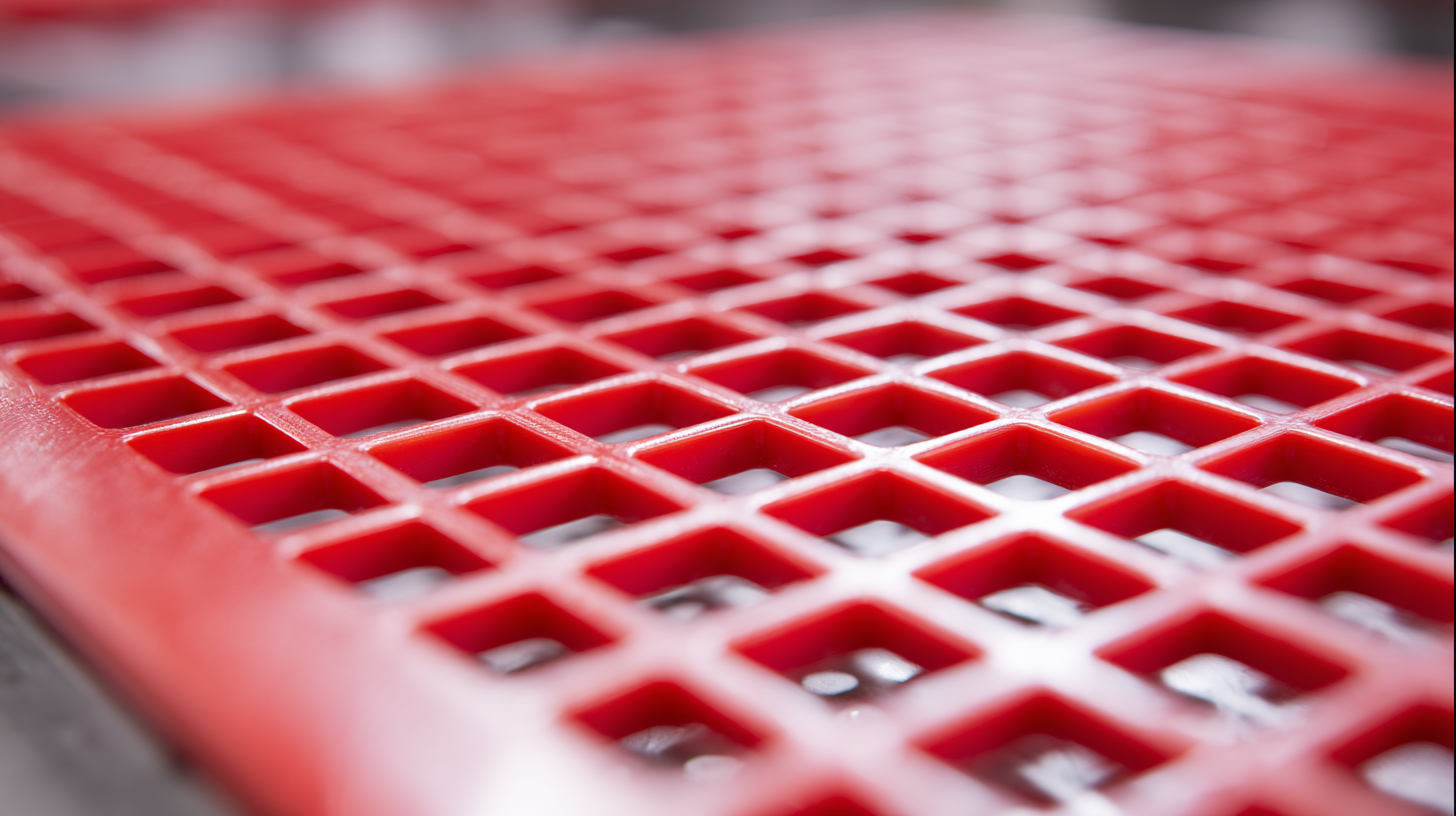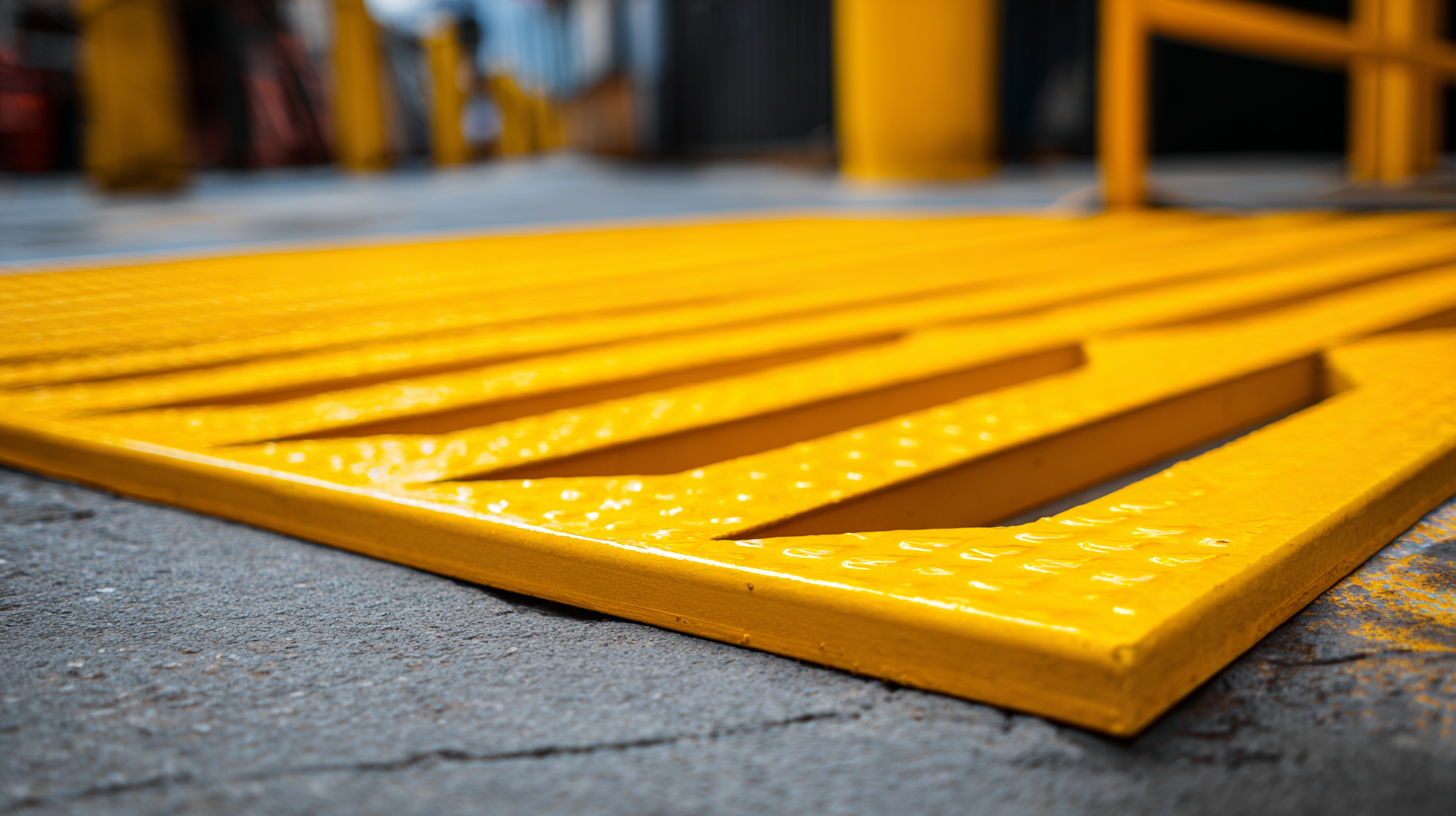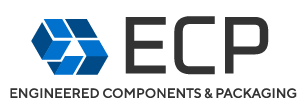585.204.6770
sale@sanblueplastics.com
Your Source for Trays!
2025 Industry Trends on Best Spill Tray and How to Choose the Right One
As we approach 2025, understanding the emerging trends in spill tray technology is crucial for industries focused on safety and compliance. A recent report by MarketsandMarkets projects the global spill containment market to reach USD 1.46 billion by 2025, driven by increased regulatory pressures and a growing emphasis on environmental protection.
 Spill trays are essential in managing hazardous spills, providing not only a barrier against leaks but also ensuring that businesses adhere to stringent regulations. Different types of spill trays cater to various industries, from automotive to healthcare, each with unique specifications and applications.
This guide will explore the distinctive characteristics of various spill trays and offer insights on how to choose the right one tailored to your operational needs, ensuring optimal safety and efficiency in your workspace.
Spill trays are essential in managing hazardous spills, providing not only a barrier against leaks but also ensuring that businesses adhere to stringent regulations. Different types of spill trays cater to various industries, from automotive to healthcare, each with unique specifications and applications.
This guide will explore the distinctive characteristics of various spill trays and offer insights on how to choose the right one tailored to your operational needs, ensuring optimal safety and efficiency in your workspace.
Emerging Trends in Spill Tray Design for 2025
As we look towards 2025, the spill tray industry is evolving in response to increasing environmental regulations and the need for improved safety measures in industrial settings. According to a recent report by Grand View Research, the global spill control market is projected to reach $4.14 billion by 2028, growing at a CAGR of 5.8%. This surge indicates a pressing demand for enhanced spill containment solutions, driving innovations in spill tray design.
 One of the emerging trends in 2025 is the integration of sustainable materials in spill tray manufacturing. A recent study from the Environmental Protection Agency highlights that over 80% of industries are seeking eco-friendly options to minimize their environmental footprint. As a result, manufacturers are now opting for recycled plastics and biodegradable materials, which not only comply with regulatory standards but also appeal to environmentally conscious consumers. This shift is expected to redefine industry norms and promote a circular economy in spill management.
One of the emerging trends in 2025 is the integration of sustainable materials in spill tray manufacturing. A recent study from the Environmental Protection Agency highlights that over 80% of industries are seeking eco-friendly options to minimize their environmental footprint. As a result, manufacturers are now opting for recycled plastics and biodegradable materials, which not only comply with regulatory standards but also appeal to environmentally conscious consumers. This shift is expected to redefine industry norms and promote a circular economy in spill management.
Furthermore, advancements in technology are shaping the future of spill trays. Smart spill trays equipped with sensors that detect leaks and alert users in real-time are becoming more common in high-risk environments. According to a report by MarketsandMarkets, the smart industrial safety market is anticipated to reach $7.82 billion by 2025. This technological integration not only enhances operational efficiency but also significantly reduces the risk of harmful spills, aligning with the industry's trend towards greater safety and reliability.
Comparative Analysis of Spill Tray Materials: Pros and Cons
When selecting the right spill tray for industrial applications, understanding the comparative analysis of different materials is crucial. Among the various options, polypropylene has been highlighted as a viable choice due to its exceptional durability and resistance to chemicals. Various studies indicate that polypropylene exhibits excellent physical and mechanical properties, making it suitable for environments where spills are likely. Its lightweight nature facilitates ease of handling, a significant advantage in industries that require regular maintenance of safety equipment.
However, while polypropylene offers a range of benefits, it is essential to consider its limitations as well. One notable disadvantage is its susceptibility to UV degradation, which can compromise its integrity if used in outdoor settings without adequate protection. This limitation necessitates careful consideration of the operating environment when choosing polypropylene trays. In contrast, materials like polyethylene may present better resistance to UV exposure, although they might not match polypropylene in terms of chemical resistance. Therefore, a thorough evaluation of specific operational needs and material properties can significantly impact the effectiveness of spill containment solutions in 2025 and beyond.

Key Features to Look for When Selecting a Spill Tray
When selecting a spill tray in 2025, it's crucial to focus on key features that enhance safety and efficiency. One of the most important aspects is the spill capacity; according to the Environmental Protection Agency (EPA), compliance with regulations can be maintained by using trays that hold at least 10% more than the largest container they are designed to catch. This not only ensures regulatory adherence but also guarantees that any potential spills are managed effectively.
Another vital feature is the materials used in the construction of spill trays. Industry reports indicate that polyethylene trays have gained popularity due to their durability and resistance to a wide range of chemicals. A study by the American Society for Testing and Materials (ASTM) highlights that trays made from high-density polyethylene can withstand extreme temperatures and resist cracking, making them ideal for various industrial applications. Additionally, having non-slip surfaces can further enhance safety, especially in environments prone to spills.
Lastly, portability and ease of cleaning are two practical considerations that should not be overlooked. Spill trays equipped with ergonomic handles and lightweight designs are preferred, as they simplify the movement and positioning of trays in busy workspaces. Furthermore, smooth surfaces enable easy rinsing and maintenance, which is essential for ensuring sanitary conditions in compliance with safety standards. As the industry shifts towards more sustainable practices, selecting spill trays that are both functional and eco-friendly is becoming increasingly prioritized among companies.
2025 Industry Trends on Best Spill Tray and How to Choose the Right One - Key Features to Look for When Selecting a Spill Tray
| Feature | Description | Importance | Material |
|---|---|---|---|
| Capacity | The volume the spill tray can hold | Critical for managing spills and preventing overflow | Polyethylene, Steel |
| Chemical Resistance | Ability to withstand various chemicals without degradation | Essential for safety in industrial environments | High-density polyethylene (HDPE) |
| Portability | Ease of moving the tray from one location to another | Important for flexible work environments | Aluminum, Plastic |
| Compliance Standards | Adherence to environmental and safety regulations | Mandatory for legal and liability issues | Varies by material |
| Drainage Options | Ability to easily drain liquids from the tray | Facilitates quick clean-up procedures | Rubber, Steel |
Cost Comparison: Budget-Friendly vs. Premium Spill Trays
When selecting the right spill tray for your needs in 2025, understanding the cost differences between budget-friendly and premium options is crucial. Budget spill trays typically offer basic functionality and are made from less durable materials, making them a practical choice for those who prioritize affordability. These trays can handle minor spills with ease, suitable for home workshops or light industrial use. However, users should consider whether these cost savings might result in increased maintenance or replacement costs over time.
On the other hand, premium spill trays are designed for longevity and higher performance. They often feature advanced materials that resist corrosion and chemical damage, making them ideal for more demanding environments. Premium options may also include additional features such as spill detection technology or integrated containment systems that enhance safety and compliance. While the upfront investment is higher, the long-term benefits, including durability and reduced risk of hazardous incidents, can make them far more cost-effective in the end. Users should weigh their unique requirements and environments when deciding which type of spill tray is worth the investment.
Real-World Applications: Case Studies of Effective Spill Tray Use
When it comes to spill trays, understanding their real-world applications can make all the difference in choosing the right one. Many industries, such as manufacturing and chemical processing, have successfully implemented spill trays to address environmental concerns and comply with regulations. For instance, a manufacturing plant installed spill trays around their storage tanks, which significantly reduced the incidents of leaks and spills, resulting in lower cleanup costs and improved workplace safety.
Tips: Always assess the materials and chemicals you work with to determine the most suitable spill tray material. For instance, polyethylene is effective for chemical spills, while metal trays can handle more extensive spills due to their sturdiness.
Another excellent example comes from a food processing facility that utilized spill trays beneath their equipment, capturing any accidental spills from oil and other liquids. This not only maintained hygiene standards but also prevented slip hazards on the floor.
Tips: Consider the size and shape of the equipment when selecting a spill tray. A well-fitted tray will capture spills effectively and reduce the risk of contamination or injuries in the workplace.
2025 Industry Trends on Best Spill Tray Usage
This bar chart shows the number of spill tray implementations across various industries in 2024. The data indicates a significant focus on oil and chemical industries, highlighting the growing need for effective spill management solutions.
